Language - C Sharp Windows MonoDevelop
|
Language - C# Windows with MonoDevelop / Xamarin Studio Welcome to using Phidgets with C#! By using C#, you will have access to the complete Phidget22 API, including events. MonoDevelop is an open-source programming environment that mimics the capabilities of Microsoft Visual Studio and is available across all operating systems. |
Install Phidget Drivers for Windows
Before getting started with the guides below, ensure you have the following components installed on your machine:
- You will need the Phidgets Windows Drivers
Use Our Examples
One of the best ways to start programming with Phidgets is to use our example code as a guide. In order to run the examples, you will need to download and install Xamarin Studio for Windows.
Now that you have Xamarin Studio installed, select an example that will work with your Phidget:
Next, open the example project:
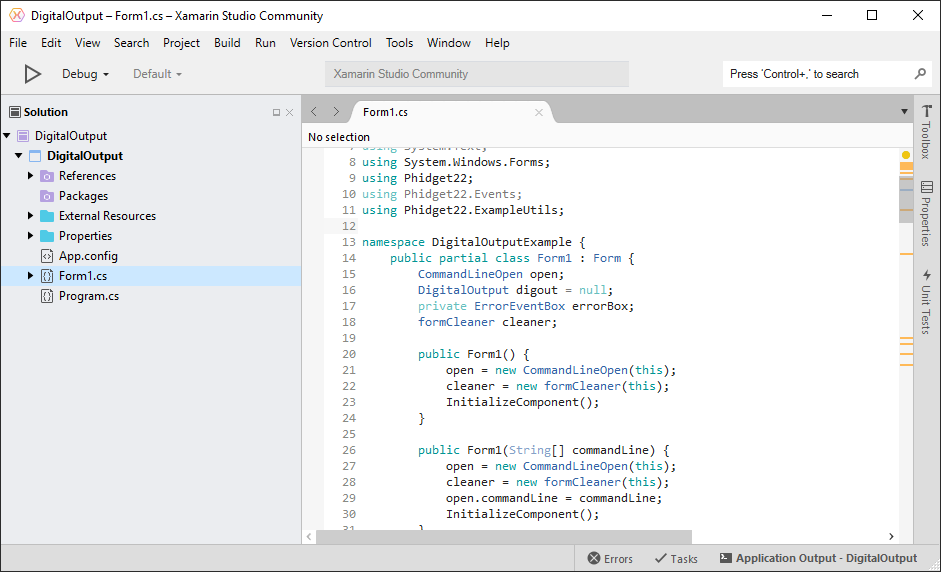
Right click the project, and click Run Item:

The application will open the Phidget, list basic information about the Phidget, and demonstrate the Phidget's functionality. Here is an example of a Digital Output channel on a RFID Phidget:
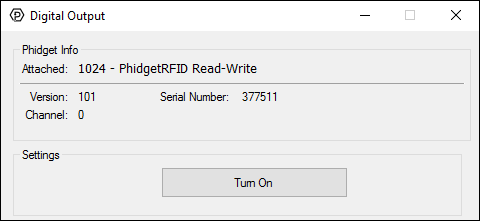
You should now have the example up and running for your device. Play around with the device and experiment with some of the functionality. When you are ready, the next step is configuring your project and writing your own code!
Editing the Examples
You'll need to modify a few things to adapt these examples for your own purposes. Start by removing the following line:
commandLineData phidgetParameters = open.parseCmdLine(); //get command line parameters
Then, you can modify any line that mentions phidgetParameters by setting it to the desired value instead of using PhidgetParameters object.
For instance:
try
{ //set all the values grabbed from command line. these values have defaults that are set in ExampleUtils.cs, you can check there to see them.
digout.Channel = phidgetParameters.Channel; //selects the channel on the device to open
digout.DeviceSerialNumber = phidgetParameters.SerialNumber; //selects the device or hub to open
digout.HubPort = phidgetParameters.HubPort; //selects the port on the hub to open
digout.IsHubPortDevice = phidgetParameters.isHubPortDevice; //is the device a port on a VINT hub?
if (phidgetParameters.isRemote) //are we trying to open a remote device?
{
digout.IsRemote = true;
Net.EnableServerDiscovery(ServerType.Device); //turn on network scan
if (phidgetParameters.Password != null && phidgetParameters.ServerName != null)
Net.SetServerPassword(phidgetParameters.ServerName, phidgetParameters.Password); //set the password if there is one
}
else
digout.IsLocal = true;
digout.Open(); //open the device specified by the above parameters
}
catch (PhidgetException ex) { errorBox.addMessage("Error opening device: " + ex.Message); }
Might become:
try
{
digout.Channel = 0;
digout.DeviceSerialNumber = 370097;
digout.HubPort = 0;
digout.IsHubPortDevice = true;
digout.IsRemote = false;
digout.Open();
}
catch (PhidgetException ex) { errorBox.addMessage("Error opening device: " + ex.Message); }
You can then manipulate the rest of the code as your application requires. A more in-depth description of programming with Phidgets will be covered in the next section.
Setting up a New Project
When you are building a project from scratch, or adding Phidget function calls to an existing project, you'll need to configure your development environment to properly link the Phidget .NET library. To begin:
Create a new .NET project:
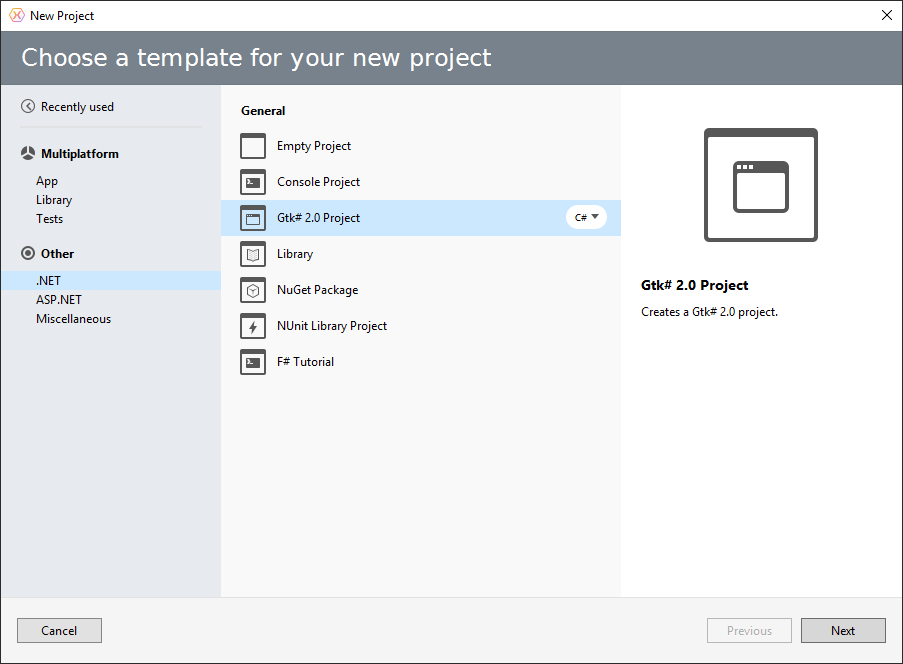
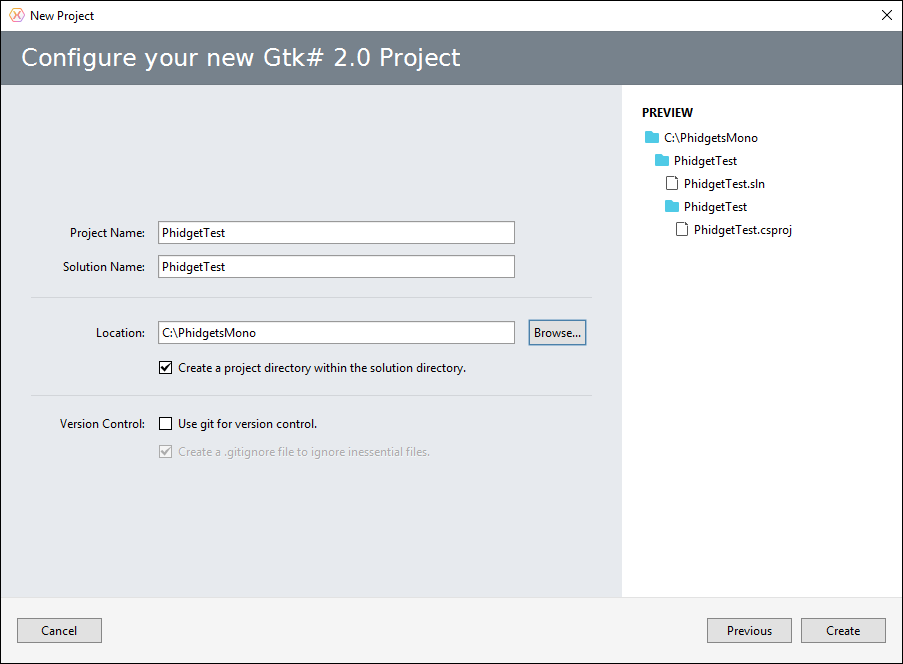
Next, add a reference to the Phidget .NET library:
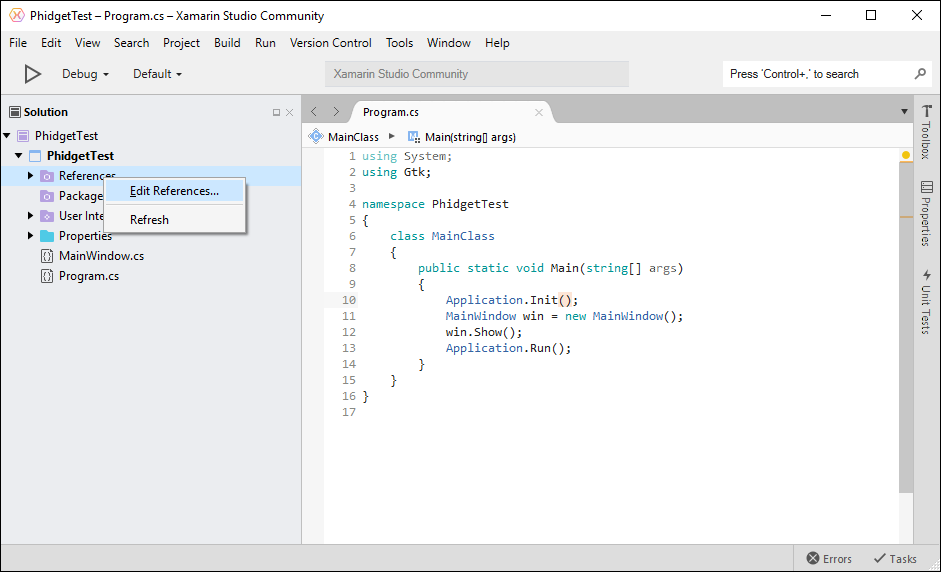
On the following screen, select Phidget22.NET.dll:

Finally, to include the Phidget .NET library, add the following lines to main window class file:
using Phidget22;
using Phidget22.Events;
Success! The project now has access to Phidgets. You can now continue to write code as described in the Write Code section.
Success! The project now has access to Phidgets.
What's Next?
Now that you have set up Phidgets to work with your programming environment, we recommend you read our guide on Phidget Programming Basics to learn the fundamentals of programming with Phidgets.![]()
